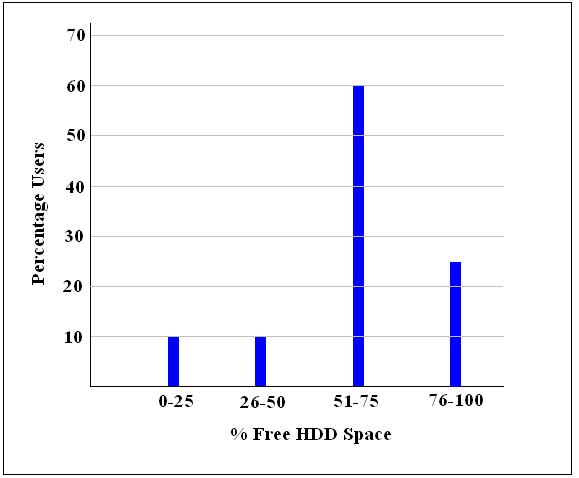Backup is essential to prevent data loss due to hardware, software, or user error. Organizations today mostly implement centralized backup systems that cost a lot in terms of both time and money; the cost of installing dedicated backup servers for the Local Area Network (LAN), and administrators for maintaining the backup system. It would be much better if we could implement a reliable backup system using the existing infrastructure of unused hard disk space on client machines, with only a small monetary overhead.
A survey at Information Networking Institute (INI), re-enforced the fact that a majority of users have a lot of space on their hard drives that goes unused. According to the survey, more than 50% of the users do not utilize more than half of their hard disk space. The results of the survey are evident in the graph shown below.
 Our project is based on this very fact. Every node on the
LAN acts as
client whenever it needs to perform backup, and takes on the role
of a
server whenever other nodes need to backup their files. Although our
system scores over a centralized dedicated backup system in terms of
cost, we also need to take into account issues like fault tolerance,
reliability and availability. Further we also need to study how the
extraneous disk and network activity caused by our system interferes
with the normal functioning of the nodes.
Our project is based on this very fact. Every node on the
LAN acts as
client whenever it needs to perform backup, and takes on the role
of a
server whenever other nodes need to backup their files. Although our
system scores over a centralized dedicated backup system in terms of
cost, we also need to take into account issues like fault tolerance,
reliability and availability. Further we also need to study how the
extraneous disk and network activity caused by our system interferes
with the normal functioning of the nodes.The P2PDiBS system is based on the following basic primitives: